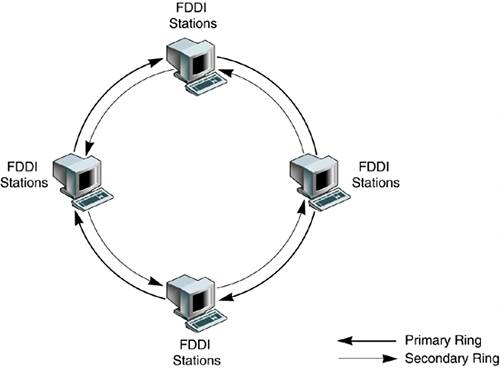Definition of Secondary Ring in Network Encyclopedia.
What is Secondary Ring?
Secondary Ring is one of the two rings used in Fiber Distributed Data Interface (FDDI) networks to interconnect stations on the network. FDDI is a dual-ring topology networking architecture based on a token-passing access method.

The secondary ring usually sits dark (unused), except when a fault occurs on the primary ring, in which case the network reconfigures itself to make use of the secondary ring to wrap around the fault. Because the data travels on the secondary ring in the opposite direction that it was traveling on the primary ring, when it’s put to use, the secondary ring reroutes data back the way it came, thus avoiding the problem spot. The dual-ring configuration provides FDDI with a degree of fault tolerance – if a computer or cable on the primary ring goes down, the secondary ring is put to use, working in conjunction with the portion of the primary ring that isn’t broken.
This feature is known as a self-healing capability and is performed when the stations on both sides of the link concentrator reconfigure themselves when a failure occurs in the link (due to a cable break, a loose connector, or some device failure).
Secondary Ring limitations
The FDDI specification allows the length of the two rings to reach up to 200 kilometers, with up to 1000 attached stations. However, since the secondary ring is usually used for redundancy purposes, a maximum of 500 stations is allowed on an FDDI network. Repeaters are needed every 2 kilometers around the rings.
Primary and Secondary Ring in different physical paths
Run the FDDI primary ring and secondary ring along different physical paths to make your FDDI network even more redundant. If an accident or disaster affects one of the rings, it might not affect the other.